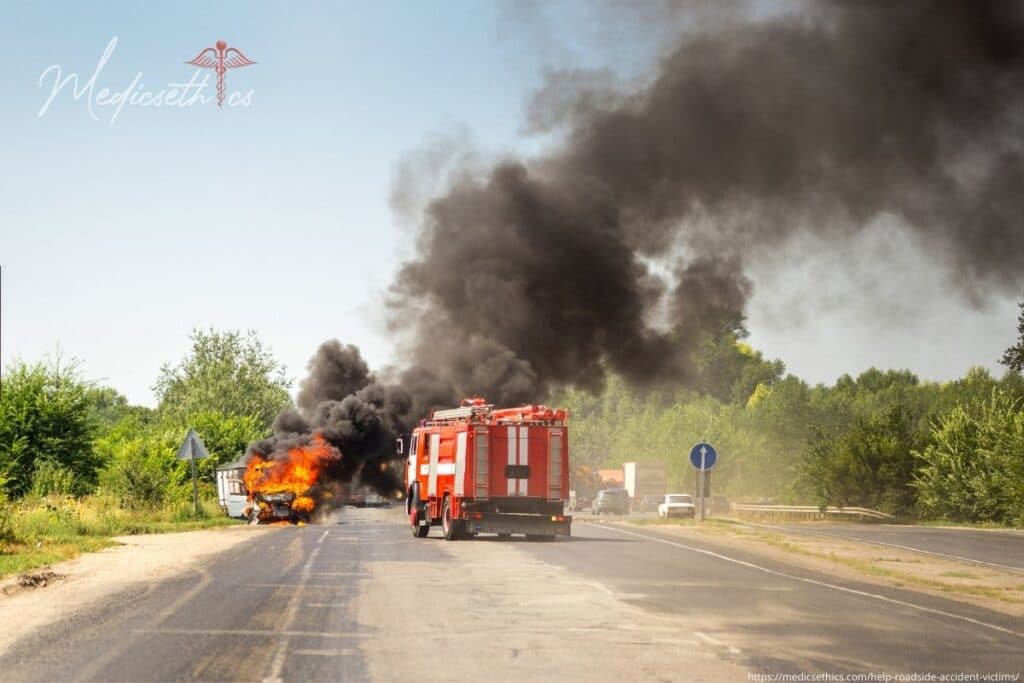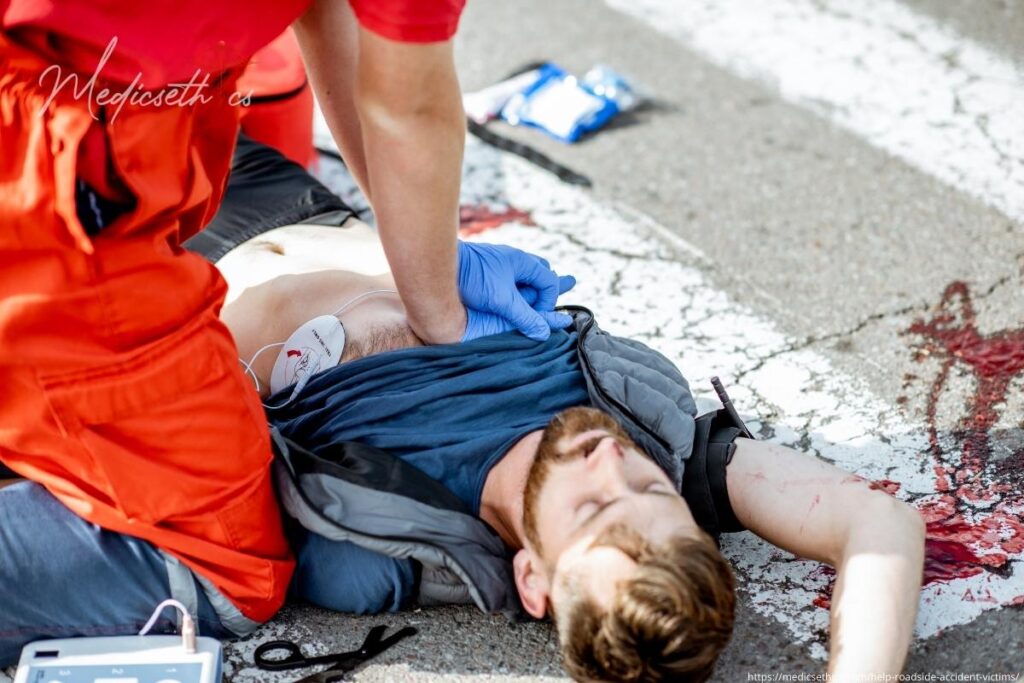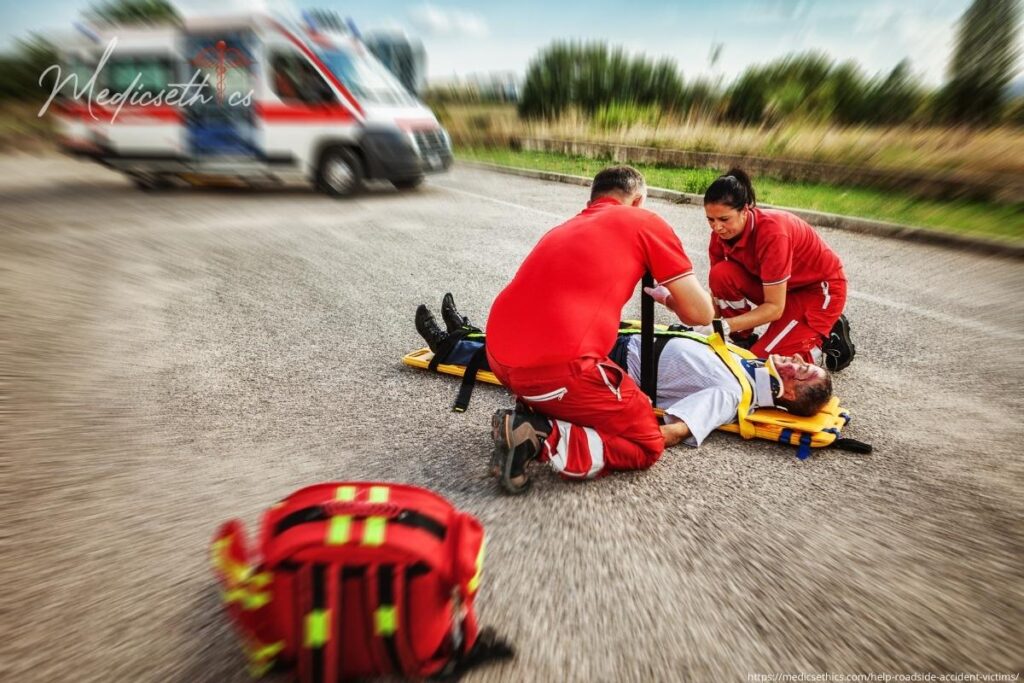We all once in a lifetime sight seen a car or any other roadside accident. And helping roadside accident victims is a complicated responsibility and there is always one fear in the helper’s mind ” am I doing it right ? “. In this article, we will learn and cover all the important tips we should keep in our minds while volunteering Road accidents First Aid.
Accidents?
Roadside Accidents or Traffic Accidents mainly occur due to the fault of drivers or the person who drives the vehicle. Roadside accidents account for 2.1% of death globally. It is the 11th leading cause of death worldwide.

WHAT ARE THE CAUSES OF ROAD ACCIDENTS?
- Distracted driving:
- Taking on the cell phone.
- Sending a text message
- Eating
- Arguments
- Loud chatting
- speeding:
- Ignoring the speed limit.
- The faster you drive the later your reaction will be able to stop in time to prevent an auto accident.
- Drunk driving:
- Drinking makes you lose focus and function properly.
- Is very dangerous when operating a vehicle.
- Rain:
- Road becomes slippery
- Difficult for drivers to see the road
- Causes vehicle to spin out of control while breaking
- RUNNING red lights :
- Red means stop
- Drivers speed up when they approach a yellow light
- People excuse this to “being in hurry”
OTHER CAUSES ARE :
- Without wearing helmet
- Without wearing a seat belt
- Not following traffic rules
SOLUTIONS :
- Education and improving training in driving
- Organizing Campaign about road and traffic safety to raise moral and ethics among the citizens
- Improving the road conditions
- Strict punishment should be enforced by the government if a person drives in over speed
- Two-wheelers should not exceed 50-70 kph
- All rules should be followed correctly
EMERGENCY MANAGEMENT OF CRUSH INJURIES :

Basic life support measures should be started with an assessment of airway, breathing, and circulation especially the establishment of intravenous access
If possible, fluid resuscitation should be started as soon as possible especially in limbs trapped >4 hours.
Attention should be focused on the possibility of concomitant injury {fractures, organ damage, spinal injury, hemorrhage
High flow oxygen should be started a patient should be transferred to a medical facility as soon as possible
Tourniquets may help to control hemorrhage.
Fluid resuscitation
Iv access and fluid resuscitation are the mainstays of treatment. aggressive resuscitation using warm normal saline is recommended to reverse metabolic acidosis, improve coagulation cascade and prevent renal failure.RL should be avoided as it contains potassium. dextrose should be avoided until the resolution of shock and establishment of normovolemia.
ARRANGE FOR TRANSFER TO HOSPITAL:

Insert invasive monitoring and foley catheter. monitor blood pressure and urinary output closely.
Continue resuscitation with normal saline at 1 i/h.
Once normovolemia is achieved, alternate with 5% dextrose solution.
After hospital admission: sodium bicarbonate (50 meq /l ) is added to every 2 or 3 dextrose bottles to keep urine ph > 6.5
Metabolic acidosis: if arterial blood ph>7.45 acetazolamide can be given as a iv bolus of 500 mg.
Wound management
- Apply direct pressure to any bleeding wound, to control hemorrhage
- Examine wounds for gross contamination and foreign bodies
- Remove constricting rings or jewelry from injured body part
- Cleanse wound periphery with soap and periphery water and provide anesthetics and analgesics whenever possible.
- Irrigate wounds with a saline solution using a large-bore needle and syringe
- Remove devitalized tissue and foreign bodies to repair as they may increase the incidence of infection.
- Clip hair close to the wound. shaving hair is not necessary and may increase the chance of wound infection
- Cover wounds with dry dressing deeper wounds may require packing with saline soak gauze and subsequent coverage with a dry bulky dressing.